There’s a lot more to effective asset management than knowing when you deployed a new piece of equipment and where it’s located. Knowing how well maintained that equipment is, its service status and whether it’s likely to need maintenance or if it’s reaching its end of life are all critical metrics that need to be measured, monitored and acted on.
Successful asset maintenance is not just about fixing problems as they arise. Taking a proactive, data-led approach ensures that you are servicing your customers, whether they are inside your business or if you’re providing services externally, in a way that minimises interruptions to operations.
There are many different metrics you could be focusing on when it comes to asset maintenance. Here are the top five we think you should be keeping your eye on for maximum effect.
1. Mean time between failure (MTBF)
Predicting when a piece of critical equipment will fail is crucial to maintaining reliable operations. In the past, one way was to simply look at the asset register, check the date the equipment was purchased and commissioned, ask the accounts team if the cost had been full depreciated and make a ‘gut feel’ call on whether a piece of equipment was nearing failure.
But that approach omits some important information. For example, how long has the equipment been in use? A piece of equipment may have been purchased five years ago but only used for some of that time. Or it might be designed to operate 24/7 but was only needed for part of each day, or not every day.
When you’re armed with that data, as well the equipment’s repair and maintenance information, you can calculate the MTBF.

Let’s say you have a machine that has operated for 12 hours per day for a year. There have been two breakdowns causing three and six hours each – a total of nine hours of down time. We can calculate the MTBF as:

When we break that down into days, by dividing the number of hours by 24, we learn that we can expect a failure every six months or so. For an asset manager, that information can be used to schedule a maintenance window every few months that falls outside the machine’s normal operating time.
2. Mean time to repair (MTTR)
When a piece of equipment fails, knowing how long it takes to fix it is critical to setting expectations for customers and knowing how long to allocate tasks to service technicians.
The clock on repair times starts as soon as the failure is detected and ends when the equipment is operational. If the total down time across a year is 12 hours and there have been four failures, the MTTR is three hours.

3. Overall equipment effectiveness (OEE)
The question of equipment effectiveness directly correlates with the return on investment. To understand how effective a piece of equipment is you need to consider three factors

Cycle time is the amount of time it should take to deliver the machine’s expected output. For example, if the machine is used to make pencils, does the machine produce pencils, or perform, at the rate you expect? Quality then asks how many of the pencils are suitable for use or sale.
In a perfect world, each of those measures would deliver a result of 1. When you multiply them, you get a result of 1, indicating the OEE is perfect. But let’s say the machine is only available 95% of the time, runs at 80% of the required performance and 10% of the output is scrapped.
This gives us a different result.
![]()
Now, you can clearly see that the equipment is working well below the effectiveness you expect.
4. Asset management cost
Each year, you will budget the cost it will take to maintain the plant and equipment you rely on. These budgets will be based on historical trends, an understanding of the MTBF, the MTTR (which helps you understand the labour cost as well as the cost of downtime) and replacement schedules.
Tracking the cost of asset management is a matter of ensuring you capture repair costs accurately and tracking them against budgets. Exceeding the budget doesn’t necessarily mean a piece of hardware should be replaced but it will flag whether you need to make a decision about repair or replacement.
5. Unplanned maintenance
Unplanned maintenance is the scourge of all operations. While scheduled maintenance can be annoying, a plant failure at the wrong time can have a significant impact.
When you track downtime accurately, you can categorise it as either scheduled or unplanned. While some downtime is unavoidable, understanding the MTBF, MTTR and whether an outage was expected or not, helps drive a preventative maintenance plan.
Armed with all this information, you can now understand the total cost of ownership (TCO) of your assets. The TCO is a financial estimate of how much an asset costs you that covers both and indirect costs. Investing in an Asset Management solution helps you understand the TCO so you can truly understand the return on your investment.
Retriever’s Asset Aviator Management application suite is highly configurable and supports service management processes to improve workforce productivity and asset uptime. Coupled with flexible software licensing options, it caters for the most demanding requests from service providers.
Asset maintenance is critical to maintaining effective and efficient operations. While there are many things you can measure, it’s important to focus on metrics that you can change and that will make a difference.
